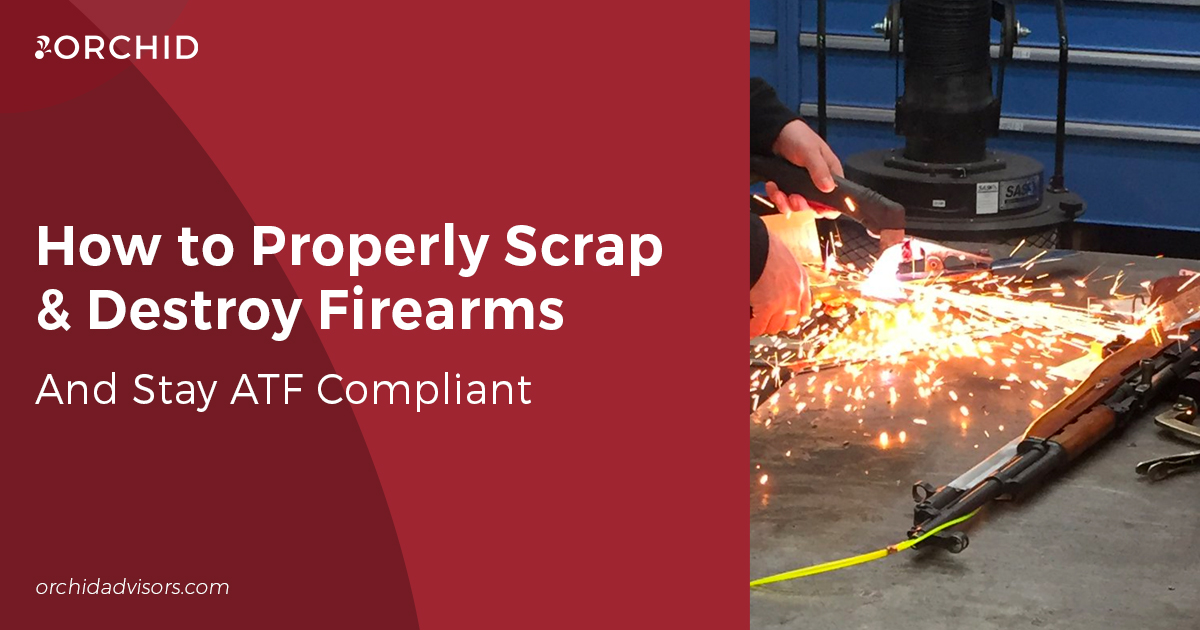For one reason or another, not every firearm manufactured will enter the consumer market. After all, more than 10 million guns were manufactured in 2020, according to an interim ATF Annual Firearms Manufacturing and Export Report. From design changes to machining errors to material defects, some firearms will ultimately be scrapped or destroyed during the production process. However, an FFL cannot simply toss an unwanted firearm in a dumpster and forget about it.
While there’s plenty of instruction and regulation regarding the proper ways to manufacture and acquire firearms, there is less detail on how to legally scrap or destroy them. Most of the information is available in an ATF publication simply titled “How to Properly Destroy Firearms,” which lists specific destruction procedures, but it fails to describe what records should be kept and how scrap should be secured. We’ll attempt to answer these questions and others in this article.
Firearm Scrapping
Federal regulations define an “unserviceable firearm” as a firearm incapable of discharging a shot by means of an explosive and incapable of being readily restored to a firing condition. If a firearm – including a frame or receiver – is not functional but is capable of restoration, these firearms are not considered destroyed and remain regulated under federal law.
Take an assembled rifle or revolver, for example. By removing various firearm parts, such as barrels, buttstocks and cylinders, without affecting the frame or receiver, the firearm may not be capable of firing, but it could still be restored to such condition. As such, FFLs are held accountable for these scrapped firearms.
If not destroyed immediately, scrap firearms should be collected in a central location and secured in a locked container while awaiting physical destruction. These scrap firearms should be inventoried and remain in your A&D bound book as an open disposition, complete with firearm Make, Model, Serial Number, Type, Caliber/Gauge.
Firearm Destruction
The ATF offers four methods of firearm destruction: melting (smelting), shredding, crushing and cutting. The latter is the only method in which specific acceptable procedures are provided, but regardless of method, regulation requires the method to render firearms incapable of being restored to firing condition.
Before a firearm is destroyed, FFLs should first validate their records against the physical guns, including the firearm type at the time of destruction. As in the previous example, if you are disassembling a firearm and only scrapping the frame or receiver, your bound book must first reflect the change in form prior to the final scrap disposition. The bound book should then be updated immediately after destruction to ensure accuracy.
Specific to destroying NFA firearms, FFLs must prepare a letter to the NFA Division informing them of the destruction and requesting they amend your National Firearms Registration and Transfer Record to remove the NFA items scrapped.
FFLs may also want to take photos or videos of firearm destruction for internal records and future reference upon ATF inspection.
How to Cut A Firearm
Perhaps the easiest method of firearm destruction, torch cutting must meet specific ATF requirements to ensure firearms are incapable of being restored to firing condition once destroyed. Those requirements are as follows:
- Must use an oxy/acetylene torch (not band saw)
- Cuts must remove at least 0.25” of metal per cut
- Cuts must be made at angles and completely sever the receiver in at least three (3) critical locations, specified by model, including (1) the forward wall or barrel mounting area, (2) the rear wall, and (3) an area having a critical fire-control-component mounting pin and/or the slot in which the operating handle reciprocates.
You can refer to the ATF publication, “How to Properly Destroy Firearms,” for general diagrams of these locations. Destruction procedures for torch cutting of machine guns, specifically Browning M1919, FN FAL, Heckler & Koch G3 and Sten-type firearms, are laid out in ATF Ruling 2013-1, 2013-2, 2013-3 and 2013-4.
While we hope manufacturers and FFLs can limit firearm destruction, no production process is without error or waste. However, knowing how to legally scrap and destroy firearms will ensure you stay in compliance throughout the process.
Contact Orchid today to speak with our regulatory experts about how to navigate firearm destruction, including bound book dispositions and an in-depth review of your compliance processes and security.







![2024 ATF FFL Inspection Violations [Published March 2025]](https://orchidadvisors.com/wp-content/uploads/2025/06/June-16-Blog-Post-ATF.png)
0 Comments